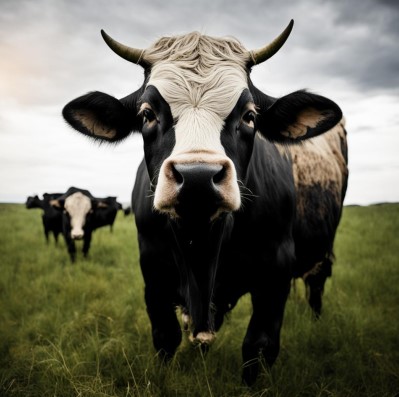The Global Pig Industry: Challenges and Opportunities on the Horizon 2025

Economic and political factors
One of the key factors affecting the pig industry is production costs. Improved availability of feed grains is expected to reduce these costs. However, uncertainty in feed production remains. Political instability, particularly in countries such as South Korea , as well as possible changes in US trade policy under the new administration, could pose additional risks to global supply chains.
Disease outbreaks such as African swine fever ( ASF ) and porcine reproductive and respiratory syndrome virus (RRRSV) continue to have a negative impact on the industry. These diseases not only lead to a reduction in herds, but also disrupt supply chains, which in turn can cause a shortage of pork in the market.
Production status and forecasts
Despite these challenges, global pork production remains relatively stable, with an expected growth of less than 1%. This is due to the fact that many countries, such as Brazil and the United States, continue to actively develop their pig production programs, introducing new technologies and improving animal genetics. At the same time, in CHINA, where pig farming traditionally occupies a significant share, there is a tendency for the herd to decline due to disease outbreaks.
Pork consumption: new opportunities
The situation on the pork market will also depend on prices for other types of MEAT. With the supply of beef decreasing, demand for pork is likely to increase, especially in North America and Brazil. This will create additional opportunities for pig farmers who will be able to offer competitive prices .
Regional differences in supply and demand will also play an important role. For example, in China and SOUTH KOREA, pork prices are expected to decrease, which may negatively affect producers’ incomes. At the same time, pork prices may increase in Japan and Southeast Asian countries, which will create incentives for increased imports and expansion of local production.
Environmental aspects
Environmental factors should not be forgotten, which are becoming increasingly significant in pig farming. Sustainable production, reducing the carbon footprint andAnimal welfare concerns are becoming important demands from consumers and regulators. In response, many producers are starting to implement environmentally friendly practices, which can increase their competitiveness in international markets.
Thus, the global pork industry in 2025 will face many challenges, but also new opportunities. Adaptation to changing conditions, the introduction of innovative technologies and attention to environmental aspects will be key factors determining the success of pork producers in the future. it is important that market participants are prepared for changes and can quickly respond to challenges in order to maintain their competitiveness and ensure stable development of the industry.
Read together with it:
- Первые в центральном регионе. Узнали, какой каравай зерновых собрали в этом сезоне в ОАО "Гастелловское"Новости темы В этом году аграрии Минской области собрали весомый каравай в 2,2 млн тонн зерна вместе с рапсом, и это невзирая на все сюрпризы погоды. Первое место по итогам жатвы-2025 в центральном регионе заняло ОАО "Гастелловское". За счет чего хозяйству удается достигать таких выдающихся результатов, узнала газета "7 дней".Кропотливый труд плюс технологии и дисциплинаУспех уборочной кампании во...
- Губернатор назвал меры по борьбе с топливным кризисом в Хабаровском краеДемешин поручил наладить поставки бензина и дизеля для Советского-Гаванского и Ванинского районов с двух НПЗ, которые работают в Хабаровском крае. Дефицит топлива на берегу Татарского пролива наблюдается с начала сентября Губернатор Хабаровского края Дмитрий Демешин собрал рабочее совещание для борьбы с топливным кризисом в Ванинском и Советско-Гаванском районах. Он написал это в своем телеграм-ка...
- Bloomberg узнал о плане G7 значительно ужесточить санкции против РоссииНовый пакет санкций будет включать меры, в частности, против энергетики, финансов и военной промышленности, а также крупнейших нефтяных компаний России. Разработку пакета G7 планирует завершить в октябре, выяснил BLOOMBERG Страны «Большой семерки» (G7) приближаются к соглашению о значительном ужесточении санкций в отношении России, сообщает агентство Bloomberg со ссылкой на проект заявления. «Мы с...
- Фон дер Ляйен заявила о смене подхода к санкциям против РоссииНовый подход подразумевает не предложение поэтапных санкций, а «гораздо более жесткие меры» в отношении энергетики, финансовых услуг и торговли, все это уже входит в 19-й пакет, заявила глава ЕК Урсула фон дер Ляйен Евросоюз при подготовке 19-го пакета санкций против России меняет подход, переходя «от поэтапного усиления давления к жестким мерам». Об этом заявила глава Европейской комиссии Урсула ...
- "Cardboard Superpower." What is Poland prepared to take into 2026?Photo: Unsplash The Polish government has submitted its draft 2026 budget to the Sejm. In short, the hole in the Polish budget is growing even wider, and the national debt is on the verge of skyrocketing. Meanwhile, military spending is breaking records, cementing Poland's status as NATO's leader in defense spending as a percentage of GDP. However, the value of such leadership is questionable. Or ...
- Делегация Татарстана успешно посетила выставку CIFA в КитаеВо время визита делегация ознакомилась со станцией быков и перерабатывающим заводом, где ежедневно обрабатываются до десяти тысяч шкур, из которых производится кожа, а также различные продукты, удобрения и лекарства. Также были проведены осмотры станции искусственного осеменения, лабораторий для анализа молока и кормов, а также производства и сексирования семени. Участники обсуждали важные для жив...
- США могут стать вторым по величине рынком сбыта парагвайской говядиныДоктор Хосе Карлос Мартин Камперчиоли, президент Национальной службы здоровья и качества животных (Senacsa), рассказал о производстве мяса на экспорт в нашей стране. Ожидая окончательного заявления от Тайваня, он сообщил, что в настоящее время существует 101 рынок, заявив, что к 2025 году США станут для страны вторым по значимости рынком. Он пояснил, что внутренний рынок несколько напряжен из-за с...


